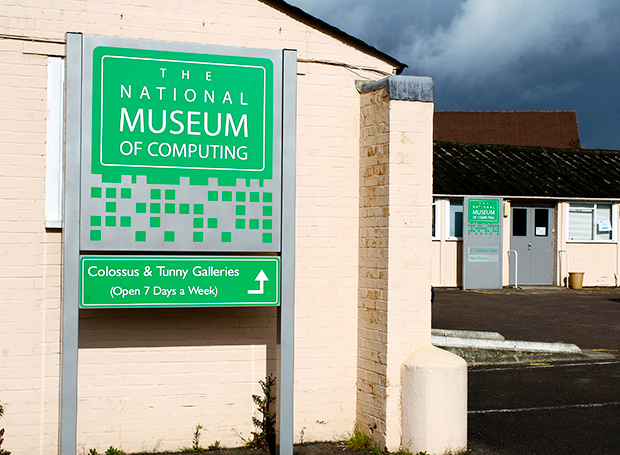ZDNet UK at TNMOC: What we learned

The idea was simple: let's pretend our offices have burned to the ground, and operate ZDNet UK from out of town. Too simple? We thought so, so we complicated it a bit by picking a venue that would be worth visiting anyway, The National Museum Of Computing at Bletchley Park. They gulped and nervously shuffled their feet, but agreed — and so, on a grey April morning, we gave London a miss and went to Bedford.
The preparation stage was straightforward and didn't take long. Having decided on a venue, talked them into it and agreed with them what we were going to do, the next stage was basic logistics — travel, equipment and a plan of action.

ZDNet UK spent a day working remotely at The National Museum of Computing (TNMOC). Image credit: Charles McLellan
Wi-Fi is a miraculous technology, but it can be capricious. As it happened, we arrived at The National Museum Of Computing at the same time as it was upgrading its wireless broadband and we were the first to really give it a stress test. It worked — and then it didn't, and then it did again, and then... anyone who's had more than a cursory experience of Wi-Fi provisioning will know this pattern all too well.
Throughout the day, however, we maintained connectivity either through the new network, through the old network, through tethered phones and — this being TNMOC — through a large 3Com wired router that happened to be available and good old-fashioned Ethernet ports. A bit of flexibility and a reasonably paranoid approach to saving work in progress in our CMS meant that our work rate never really suffered: given Wi-Fi anywhere can be dependant on load and local radio interference, this experience seemed typical.
Once we were set up, things flowed. As a team of journalists, we're used to peripatetic working, so coped fine with events like a move to a different room, various team members wandering into the temptations of TNMOC, and even yours truly having a long, fraught and chewy mobile phone discussion of the sort that normally takes place in an empty meeting room.
Of course, there were comedy moments. A group shot was delayed for a bit when we realised that among a team of six highly experienced tech hacks, none of us knew where the timer mode was on the editorial camera. The Wi-Fi went down briefly for everyone except production supremo Jon Yeomans, who jealously guarded his connection from the twitchy-fingered journalists while serenely editing copy. There was always a lead missing when you needed it, at least until someone took pity and threw theirs over the desk at you.
ZDNet UK's editorial team works amid sporadic Wi-Fi outages. Image credit: Charles McLellan
There was an unexpected bonus: the experience of working as a team out of the office was invigorating. Most team-building exercises and away-day shenanigans attract a degree of scepticism from the hardened, and rightly so. But in this case, even though it wasn't planned that way, the day was made by a combination of unusual and exciting surroundings, solving problems as a team that had a direct bearing on our work, and being outside the normal and inevitably disruptive office environment.
The fact that the TNMOC staff and volunteers could not have been more helpful, attentive and flexible put the seal on the exercise: not many places could have absorbed the unusual event of our flying circus with such panache.
If you fancy trying a working away day like this, the two key factors are preparation and flexibility. The first stage in both is being comfortable working from home with a laptop: if you've got that licked, you'll have much of the essential preparation under your belt: you'll know how to access work systems over the internet, you'll have your computer set up and functioning, and you'll have whatever peripheral bits and cables ready to hand.
Then, get your venue ready — if it's a managed space, correlate your needs with their abilities; if it's a public area with Wi-Fi, scope it out first for power and connectivity. Where you can have a backup, such as spare phones with data capability or peripherals you might need, take it. Share phone numbers, transport alternatives, and have what-if discussions.
But the best preparation is to try the exercise out for yourself. Find a local venue that's prepared to take you on, get everyone on board, and give it a go. (If we hadn't been on very good terms with TNMOC already, our second emergency location would probably have been the upstairs room in the Rose and Crown, but this would have presented its own dangers.)
As with any disaster recovery plan, the first time you try it out will be a test that won't go quite as you expect — and it's infinitely better to find that out when your offices haven't really burned to the ground or been cut off by a city in spasm over some international sports day. You may find, as we found, that the experience is worth much more than just a proof of concept.